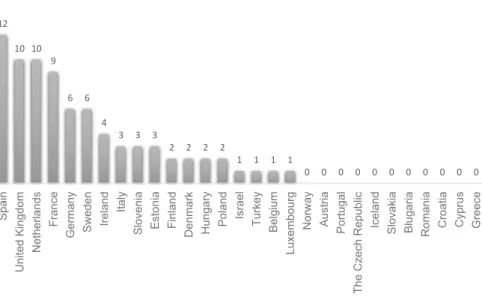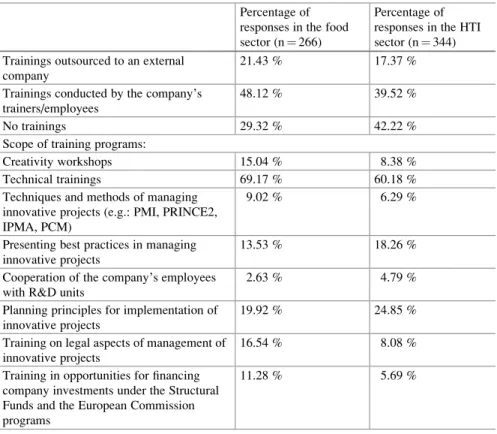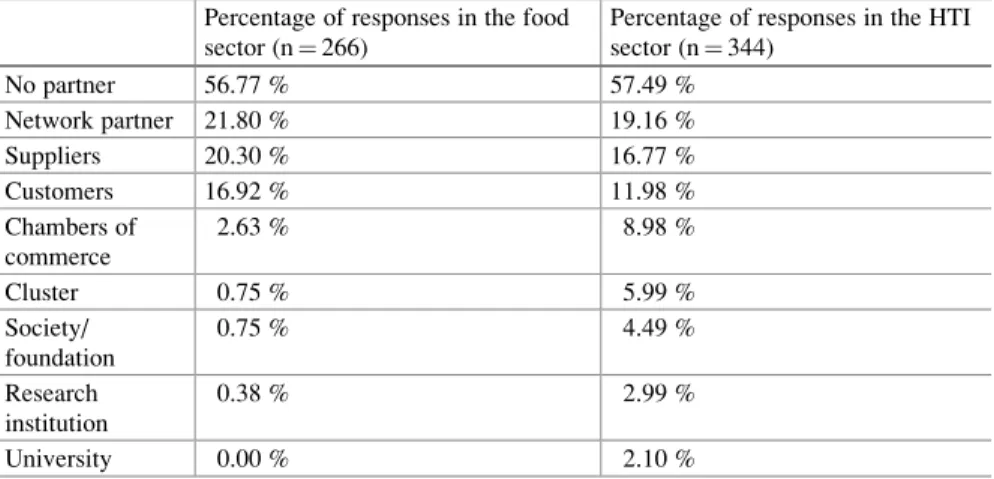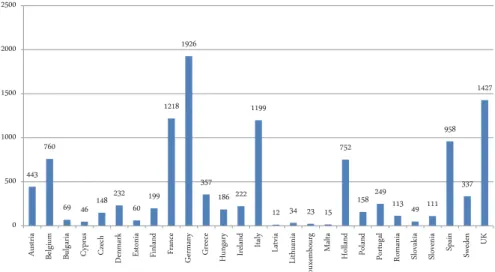EBE is a scientific society for scientists involved in the practice and study of economics, finance and business around the world. According to the authors, this contribution is already being made, namely by specialists in the field of entrepreneurial psychology.
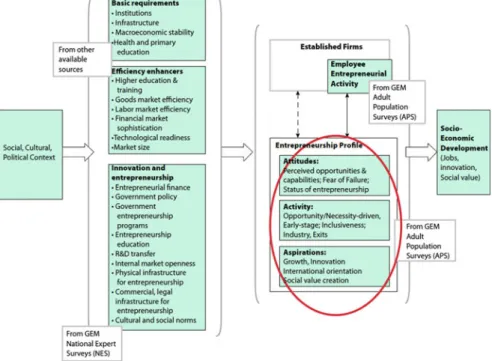
Opportunities Perception
This is particularly evident in the in-depth analysis of the EU-15 and EU-12 countries' share of individual programmes. The results show that most of the regions classified in category 1-4 are located in the EU-15 countries.

Franchising
Ronald Burton states that entrepreneurial opportunities can be found in the person's network, and as a result, a network rich in entrepreneurial opportunities surrounds a person who is motivated to be an entrepreneur (Dorin and Alexandru2014). In general, it is emphasized that building a franchising network should be considered as an entrepreneurial growth strategy.
Knowledge Economy
The concept of the creative industries sector was first defined in the late 1990s. First, it refers to Romania and includes a detailed analysis of the situation of SMEs in the country. Romania is exactly in the European average, a more detailed analysis will be presented in the next part of the paper.
However, supply chain collaboration is no guarantee of supply chain success. In order to analyze the company's performance and the impact of various factors, performance indicators were identified in the study. The results of the analysis of the variance in wholesale trade show a slight influence of the level of transaction costs on the profit margin from business operations.
4 The relationship between the tax burden and the operating profit margin in the wholesale trade in 2013. 6 The relationship between the tax burden and the operating profit margin in the metallurgical production and production of manufactured metal products in 2013.
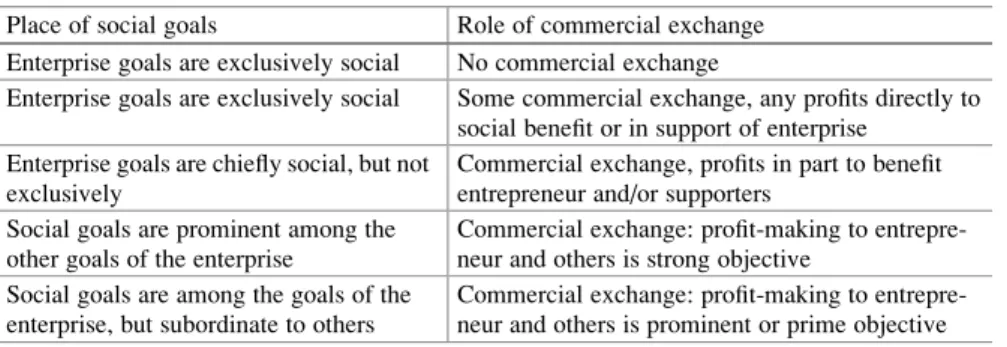
Human Capital and Organizational Leadership
Therefore, we think it is very important to understand the reasons for employees' reactions to changes in order to build appropriate management methods to reduce subordinates' resistance. In this paper, we reviewed research on resistance to change and theories of individual employee responses. Our findings demonstrate that there is much discussion in the literature about resistance to change based on employees' values, principles, expectations, and emotions.
Our paper highlights the idea that successful organizational adaptation relates to managers' high interest in creating employee support and commitment for proposed changes.
Employees ’ Resistance to Change
Resistance to change is inevitable and managers must be prepared to respond effectively to it (Fine1986). Contextual frameworks related to organizational leadership and organizational change come together as a whole, aiming to build a conceptual model of leaders for managing employee resistance to change. H1: It is possible for managers to change the level of employees' resistance to change by interfering with their emotions.
H3: Transformational leaders are able to act on the emotional level of employees to overcome their resistance to change.
Managers ’ Crucial Role in Change ’ s Implementation Versus Employees ’ Resistance
Therefore, there is a need for building a hypothesis to demonstrate the role of different leaders' attitudes and actions towards change in managing employees' resistance to change. According to Chuang's (2000) opinion, the employees' negative attitude towards the organization as a whole, towards their work and managers determines a deep resistance to change. Employees' participation in change process encourages them to believe that they are able to have control over something that affects them (Lucas 1974).
Other findings show several indicators of employee resistance to change: absenteeism, impatience, frustration, and sabotage (Plate and Stone, 1974; Veaner, 1974).
Managing Effectively Employees ’ Resistance to Change
As we just mentioned above, resistance to change was traditionally described as related to emotions such as fear and anxiety (Sinetar1981). The research of Feldman (1972) points to the following types of employee resistance: task avoidance or procrastination, hostility, resignation and underproduction. Communication creates conditions for employee engagement (Postmes et al maintained that employees were highly engaged if they received sufficient information to perform their task.
Mintzberg and Waters (1985) highlighted the impact of employee participation on a range of actions related to the change process.
Transformational Leadership: A Solution to Employees ’ Resistance
We consider it very appropriate to build conceptual models for managing employee resistance to change to help executives in the change implementation process. Meanwhile, employees must be given the opportunity to actively participate in the change process. It would also be used to compare the interpretations of resistance in different contexts of the change process.
How to deal with resistance to change.Harvard Business Review, On-line Edition, The Magazine.

Recruitment and Personal Development Practices
In other words, the emphasis is on developing committed employees who can be trusted to use their discretion in the performance of work tasks” (Arthur1994, p. 672). The above discussion suggests that knowledge sharing and knowledge protection can be fostered through human resource (recruitment and selection) and development (training and personal development) activities. Candidates and new hires can be selected and subsequently trained in a culture that simultaneously encourages the sharing and protection of sensitive company knowledge related to innovation.
Based on the above discussion, it can be expected that staff development and recruitment primarily facilitates knowledge sharing and also contributes to knowledge protection, especially knowledge abandonment.
Compensation and Performance Appraisal
Hypothesis 1b: Staff development and recruitment is positively related to knowledge protection (ie, is negatively related to knowledge leaving and leaking). The related challenge is therefore that knowledge sharing can in some cases be quite difficult to measure reliably—. Thus, it is likely that compensation and performance appraisal can promote these types of activities when specifically applied to knowledge sharing functions.
Hypothesis 2b: Compensation and appreciation is not related to knowledge protection (i.e., it is negatively related to knowledge leakage and leakage).
Commitment and Involvement Practices
In particular, performance appraisal must be communicated fairly, visibly and correctly to employees, among others (Sanders et al. 2014), in order to produce the desired outcomes. In addition to knowledge sharing, knowledge abandonment should also be affected by commitment practices—commitment reduces the propensity of employees to change jobs (Mir et al.2002, on the effect of commitment on reducing turnover) and it should increase the propensity for them to look after their employer's interests. This behavior will allow for less damage to the company, as opposed to knowledge that is completely and suddenly lost with employees who leave.
Hypothesis 3b: Commitment and involvement practices are positively related to knowledge protection (i.e., they are negatively related to exit and knowledge leakage).
HR Knowledge Practices
Furthermore, if staff turnover is deliberately kept to a minimum, with protection in mind, then it may be that knowledge sharing is reduced, as there is also less new knowledge entering the firm - in general, knowledge sharing is a relatively mutual activity, based on the expectation that the party providing knowledge achieves something in return (at least in the form of the final output for which the knowledge was requested). These outcomes are not surprising, and should certainly be recognized when adopting HR knowledge practices. According to Liebeskind (1996), the mere awareness by an employee of the company's policy to enforce legal prosecution or dismissal as a penalty for failure to keep confidential knowledge can be sufficient to act as a deterrent against inadvertent knowledge sharing and knowledge expropriation .
Hypothesis 4a: HR knowledge practices are not related to knowledge sharing Hypothesis 4b: HR knowledge practices are positively related to knowledge production.
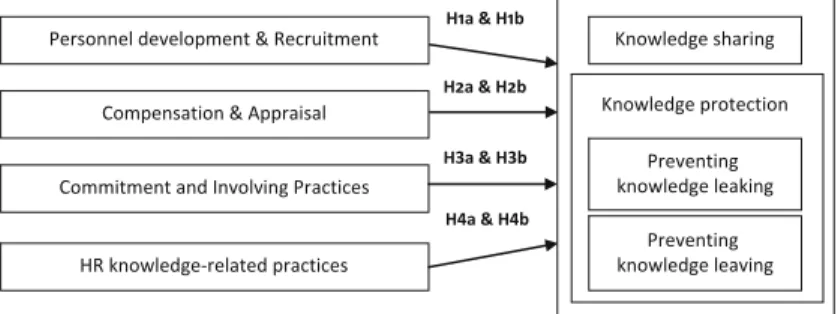
Measures
The initial sample included all members of the Federation of Finnish Technology Industries, a national industry association. The initial sample included 1,273 firms from the machinery and metals, electronics, information technology, and planning and consulting industries. The rationale behind pre-testing was to ensure that the pool of potential respondents would understand all of the survey questions.
The survey included a cover letter, which discussed the informant's role as the key respondent of their respective organizations, and emphasized that the responses should represent the entire organization, using the informant's best available knowledge and judgment.
Analysis and Results
Towards a social context theory of the relationship between human resource management and organizational effectiveness. Human Resource Management Review. Methodological problems in cross-sectional and panel estimates of the link between HR and business. Industrial relations. Given the poor reputation of the tourism industry as an employer, it is important to study the perception of business and tourism students about the industry.
Given the limitations of the study, the theoretical and practical implications of the results are discussed.
Particularities of Work in the Tourism Industry
In order to properly address the proposed objective of this study, the first part of the paper presents an overview of other relevant studies discussed in the literature. The results of the study, interpreted through statistical analysis, enable a comparison between its findings and the findings of other reviewed studies, and also indicate a number of implications of the results for Romanian actors of tourism education. During very demanding periods of the year, there is a tendency for additional occasional employment, which results in the employment of unqualified or insufficiently qualified workers.
Ultimately, this practice can affect the quality of services provided to tourists (Vellas and Becherel 1995).
Considerations and Perspectives on Tourism Education
Consequently, the nature of work in the tourism industry affects the work-life balance of employees, leading to high levels of stress and the tendency to leave the tourism industry (Boella and Goss-Turner 2005; van Rheede et. al. 2009; Eurofound2004). To meet the expectations and needs of both students and employers, tourism education providers should bridge the gap and work more closely with industry to promote the professionalization of tourism as an activity and ensure the relevance of education for tourism careers. employers in the sector. A positive experience will increase students' motivation to work in the tourism industry, while a negative experience will negatively affect their decision to pursue a career in this field (Hsu 2013).
Investigating the impact of internship programs on students' career development in the tourism industry, Chen and Shen (2012) find that such an impact exists and is largely dependent on students' level of satisfaction with the planning of the internship program and involvement of industry.
